What to do with an old sewing machine that is too far gone to economically restore as a sewing machine? Well, when I came across this beat-up old Singer sewing machine in the garage attic, I immediately thought what a great little table it would make. The decorative iron base was still in good condition and I quickly determined that it would be pretty easy to remove the old wooden top and replace it with a new one of my choosing. So, that’s what I did.
The wooden components of the old Singer treadle sewing machine were in sorry condition. The pull-out drawer in the front was sagging down on one side and the right side of the work surface had obvious water damage. The wood had been stained/painted several times to the point that it had a murky, unattractive finish. Clearly the damaged right side of the cabinet was beyond repair.
The side view of the cabinet vividly depicts the extent of the moisture damage. Note the peeling of the wood veneers and the blistering of the old varnish finish.
The treadle mechanism still worked and the metal was in surprisingly good condition with minimal rust. I removed the rust using a small sandblaster and a circular wire brush attached to a hand drill. The base was repainted with Rustoleum rust-resistant black spray paint. Took no time at all.
I spent a little time prototyping the table starting with a basic rectangular top that was considerably wider than the base. I liked the oak look but realized it was much too large and too plain Jane for the ornate base.
I eventually settled on a top that measured 19″ by 32″, overhanging the base by 4-1/2″ on the sides and 3-1/2″ on the front and back. It was made from three pieces of 3/4″ red oak that were edge-jointed and glued together.
I opted to spruce up the oak top with scalloped corners. This gave the top a little character to better go with the decorative metal base. I’ve created a separate page that details the process for laying out and cutting the scalloped corners. For the finish, I applied Valspar Golden Pecan oil stain followed by a couple coats of semi-gloss polyurethane.
The sewing machine base was attached to the wooden top with four screws. The screw diameter is considerably smaller than that of the mounting holes in the base, allowing for some seasonal movement of the wood without splitting. (Guess I’ll find out how well that works).
The finished side table. I think the size and style of the oak top meshes well with the treadle base. Not too plain and not too fancy. It felt good giving the old Singer sewing machine a second lease on life – I may have to make some more of these sewing machine tables.


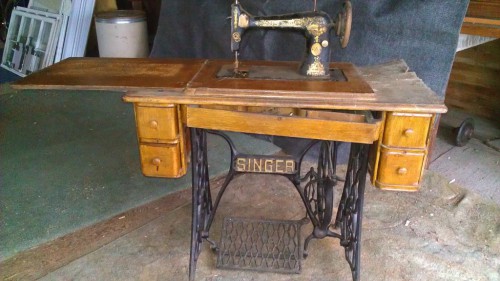
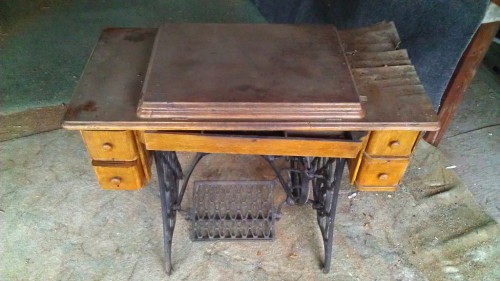
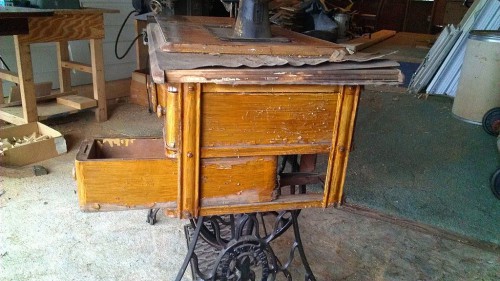
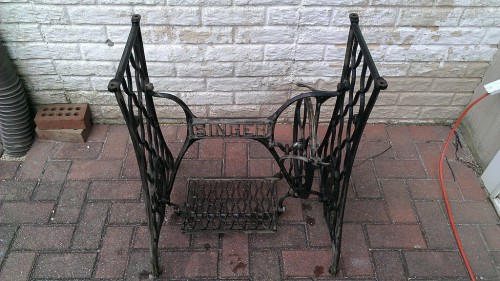
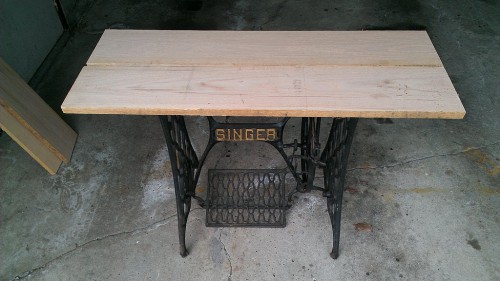
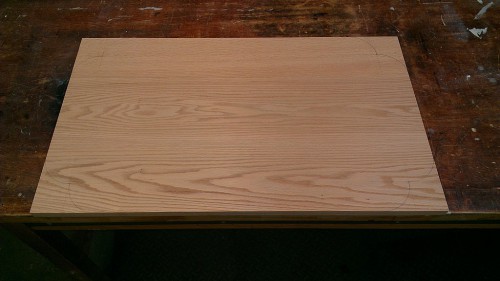
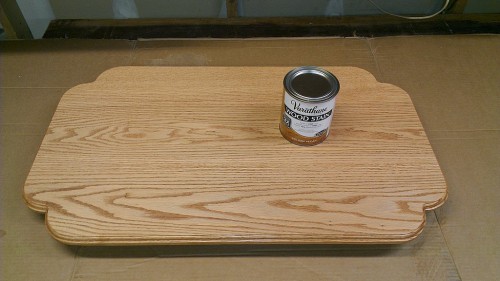
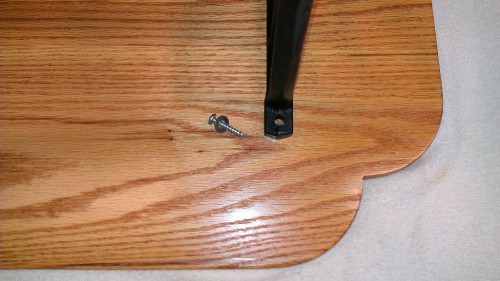
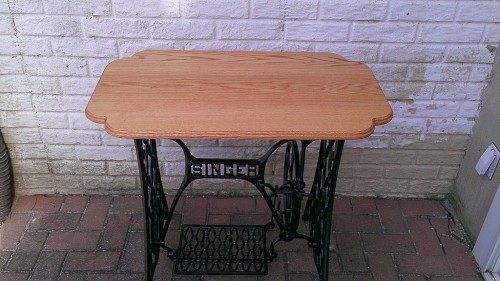
Beautiful table! Use it every day!
Hello,
Did you by any chance save rest of old sewing machine cabinet.
I’m looking for in wood lock mechanism that wood be in wood of drawer
rest. Not on drawer. or the lock mechanism that is in wood to lock
top of machine. I have two missing on my machine. Thanks,
Katie
Sorry, I did not save the rest of the machine. It was in pretty bad shape.
-Bill
I have a cabinet from an old singer machine, It Iooks like the one in the before. Im not sure which part you are looking for . add picture or better decription of it.